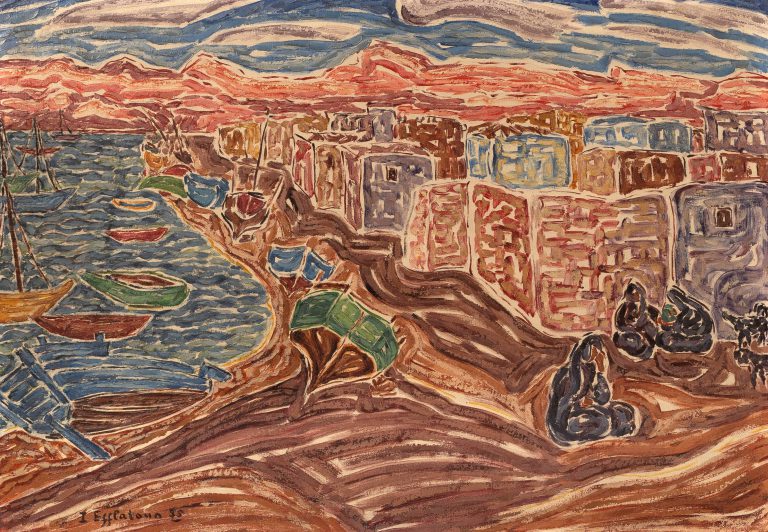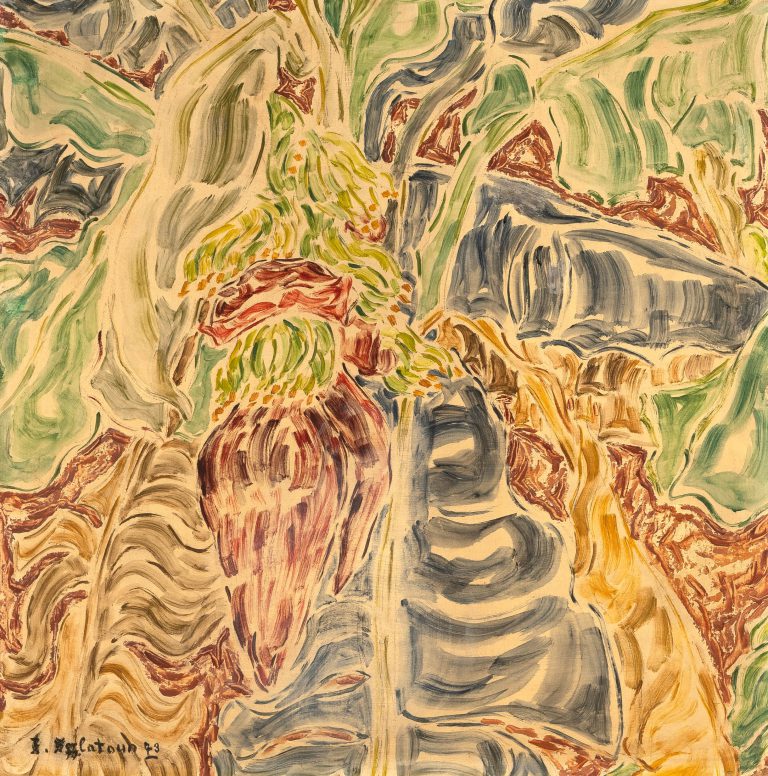Painter
Inji Efflatoun
Inji Efflatoun was an artist and political activist born into an upper-class Francophone family of landowners in 1924.
Her father, Hassan C. Efflatoun, was the founder of the Entomology Department and Dean of the Faculty of Science at Cairo University, and her mother, Salha Efflatoun, served on the Women’s Committee of the Egyptian Red Crescent Society. The parents divorced when she and her elder sister, Gulperie, were children.
Their mother established a fashion and textile boutique in Cairo, and Inji was strongly inspired by her mother’s courage and determination in living as a single working mother.
Inji Efflatoun was educated at the Collège du Sacré Coeur in Cairo before she joined the Lycée Français, where she developed an interest in literature and political history and was introduced to Marxism. At the beginning of the 1940s, she was one of the first women to attend the Faculty of Arts at Cairo University. During her studies, Efflatoun showed an interest in art, and from 1940, she studied under the painter and filmmaker Kamel el-Tilmisani, renowned for his tormented works, which satirized social norms. Efflatoun was introduced to the surrealist group Art and Liberty, founded in 1939 by writer George Henein. She later studied for one year under the Swiss-born artist Margo Veillon before working in the studio of the painter Hamed Abdallah.
Efflatoun was active as a feminist and political activist as well as an artist. In 1942, she joined the Egyptian Communist organization Iskra (al-sharra), and in 1945 she was one of the founding members of the League of University and Institutes’ Young Women. She published several political pamphlets, including ”80 Million Women with Us” and ”We Egyptian Women”.
After she met intellectual and feminist Sayza Nabarawi in 1950, Efflatoun joined the Youth Committee of the Egyptian Feminist Union. In 1951, she participated with Nabarawi and other female activists in the organization of the Women’s Committee for Popular Resistance. During the 1950s, she traveled to Upper Egypt, Nubia, and the oases and was inspired by rural daily life.
Towards the end of the 1950s, her paintings became more politically engaged. Her political activities resulted in her being secretly arrested by Gamal Abdel Nasser along with twenty-five other female political activists. Efflatoun was imprisoned for four and a half years and painted throughout her incarceration. In July 1963, Efflatoun was released from incarceration and her style became lighter and more joyful, using vibrant colors to depict the countryside and the daily life of an Egyptian worker. These works are characterized by the rhythm of textured brushstrokes playing with the blanks of the canvas to express light and painting became her main activity until she died in 1989.


